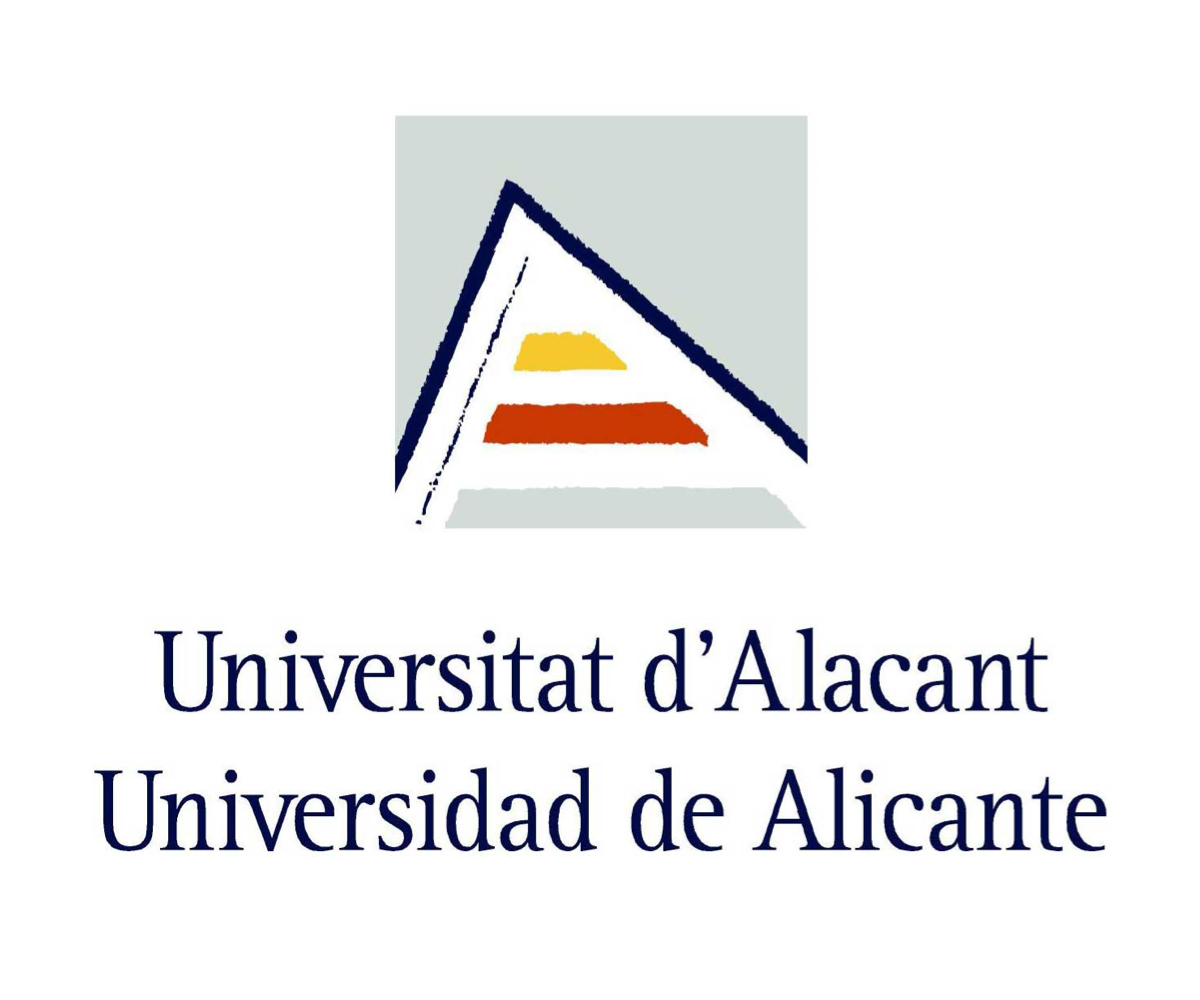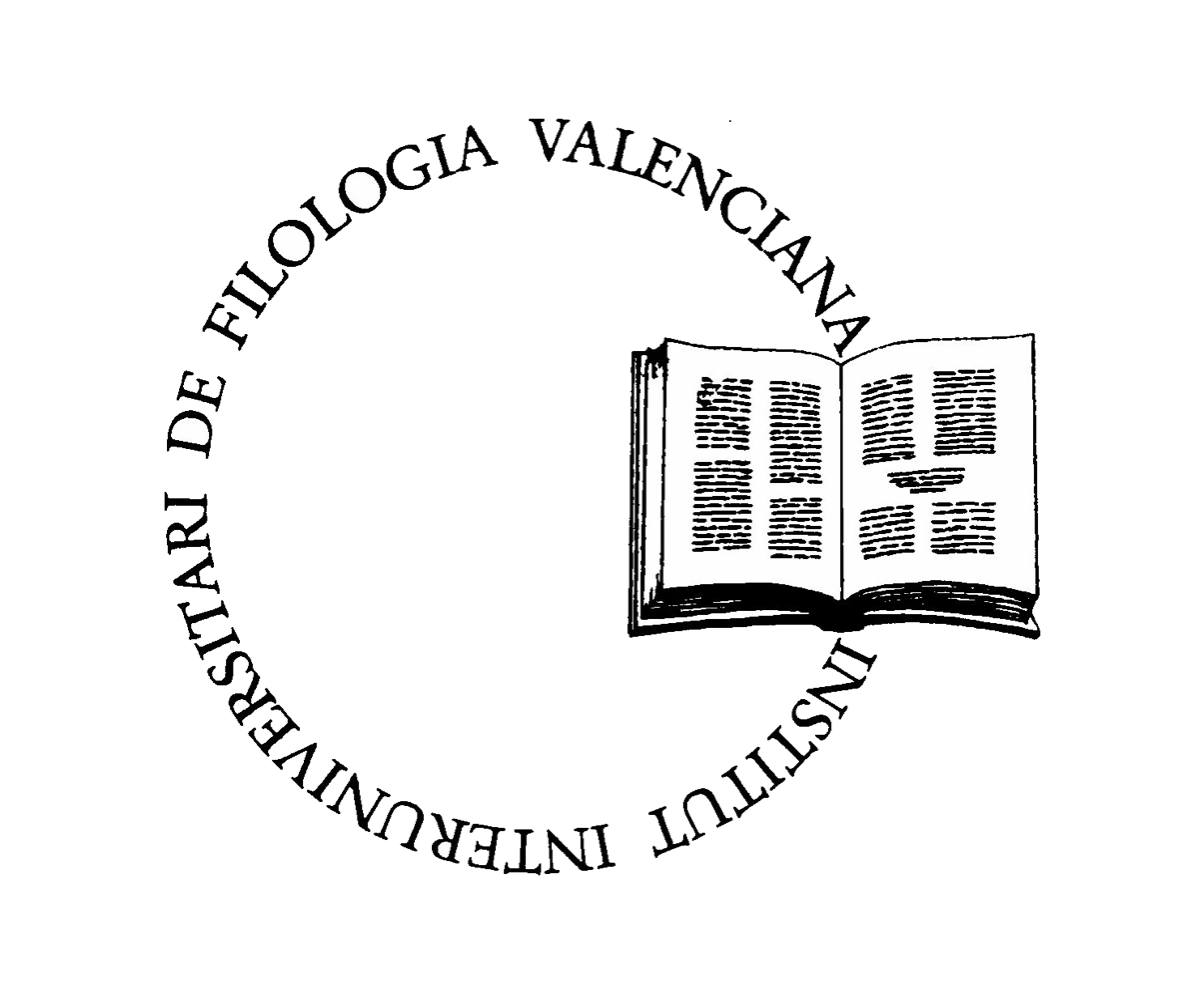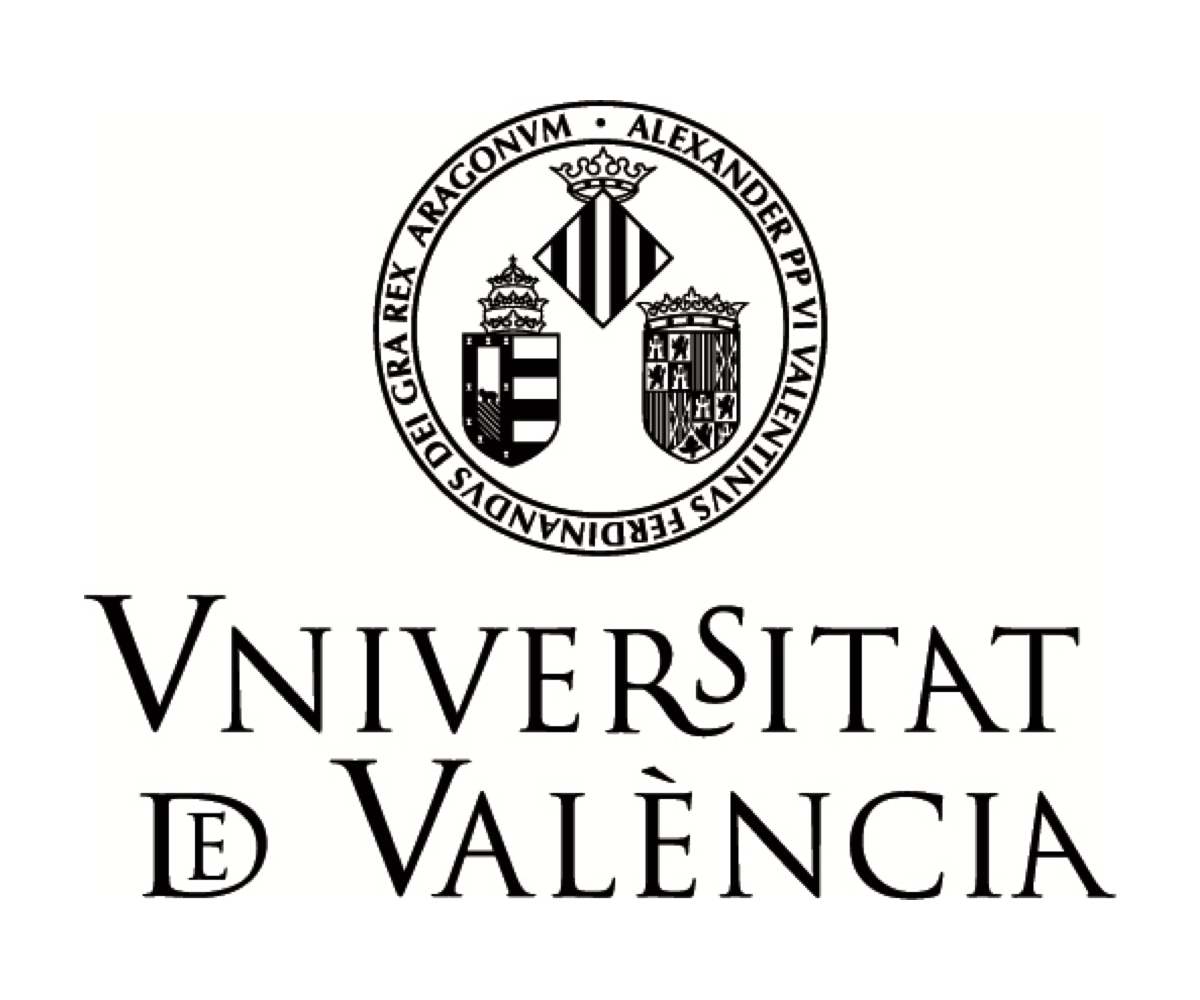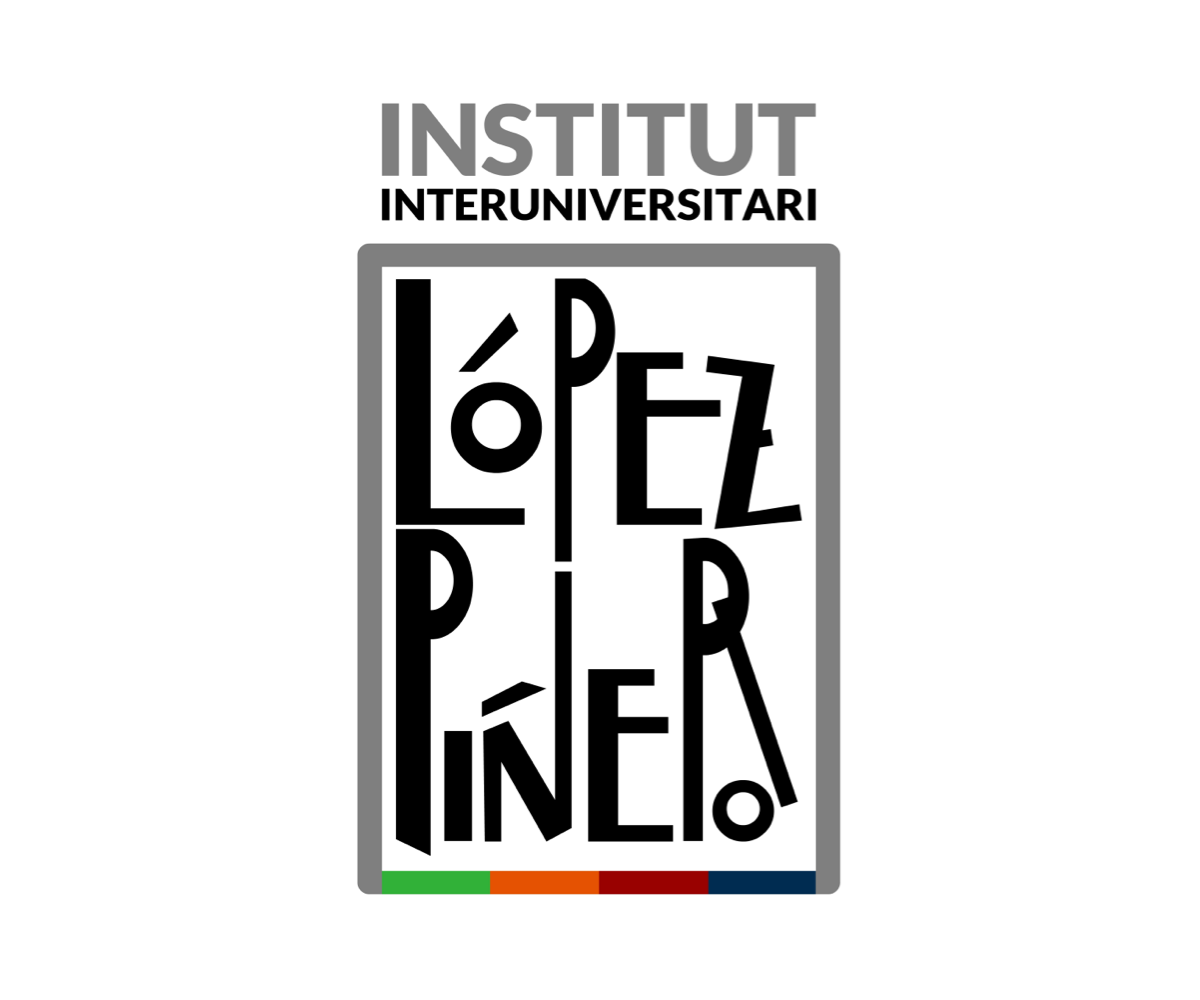Hunting birds in the Catalan sources
The bird of prey is the central element in falconry, the use of which characterizes it and distinguishes it from other types of hunting. During the late Middle Ages, huntsmen resorted to a large variety of these birds, something that enabled them to capture all sorts of different animals with regard to size, behaviour and habitat. This diversity meant that medieval huntsmen had to develop a rich vocabulary to be able to describe and refer precisely to each of the birds used. It should be pointed out, moreover, that this rich terminology was associated with an exhaustive classification of birds of prey according to multiple criteria, making it possible to recognize and distinguish many of their characteristics.
Each of the medieval languages in which the huntsmen expressed themselves required its own technical vocabulary. In the present document we offer a general review of the birds used for hunting, along with their names in Catalan taken from different textual sources in this language, basically falconry treatises, archive documentations and literature. Here we synthetically present most of the terms in which the sources refer to birds of prey, although it must be said that it is not an exhaustive inventory, among other reasons because the ongoing exploration of sources continually offers us new terms. In the interest of greater clarity, and given the informative nature of the document, nor do we include all the orthographical or phonetic variations that these sources offer us, limiting ourselves to the most common one –occasionally two– that we offer in a normalized way.
In the first place, we refer to the species of birds used. It must be said, however, that the modern concept of species does not give us a classification of these animals identical to the one used by medieval huntsmen, who occasionally identified as different species what is now considered to be one single species. To refer to the idea of species, Catalan-speaking huntsmen used the term agre. This was the term used also for the nests of birds in the wild or the nests belonging to the pairs established in a territory (English eyrie) . Below, we present the agres used for hunting according to the Catalan sources.
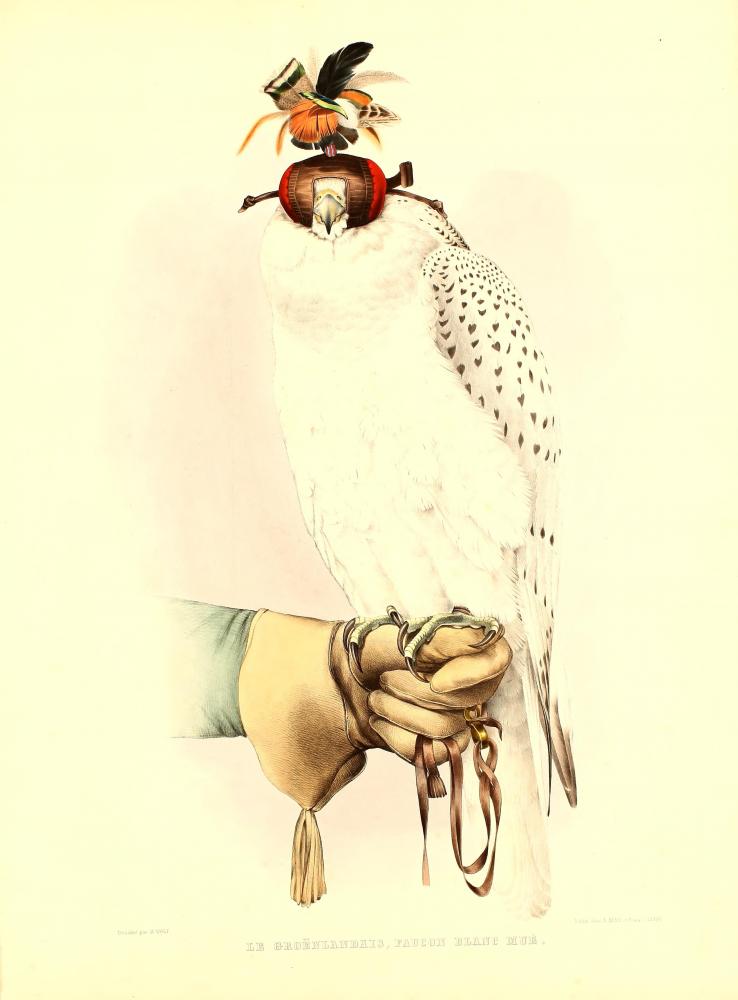
Grifaut
The largest bird used for hunting was the (falcó) grifaut or grifalt (English gyrfalcon) –corresponding to the girifalte of Castilian huntsmen. It is the largest falcon in existence and originated in the most northerly regions of Eurasia and America, so it was always very difficult for huntsmen from the Mediterranean regions to obtain it; they could only get hold of birds by paying huge sums to the merchants who brought them from Northern Europe, or when they were received as presents. For this reason these birds could only be afforded by the most powerful people, kings and great lords, who frequently used them as diplomatic gifts. Besides their qualities for hunting, which enabled them to capture large animals such as cranes or herons, the beauty of these birds was also acknowledged and appreciated by their owners, as some of them were almost completely white.
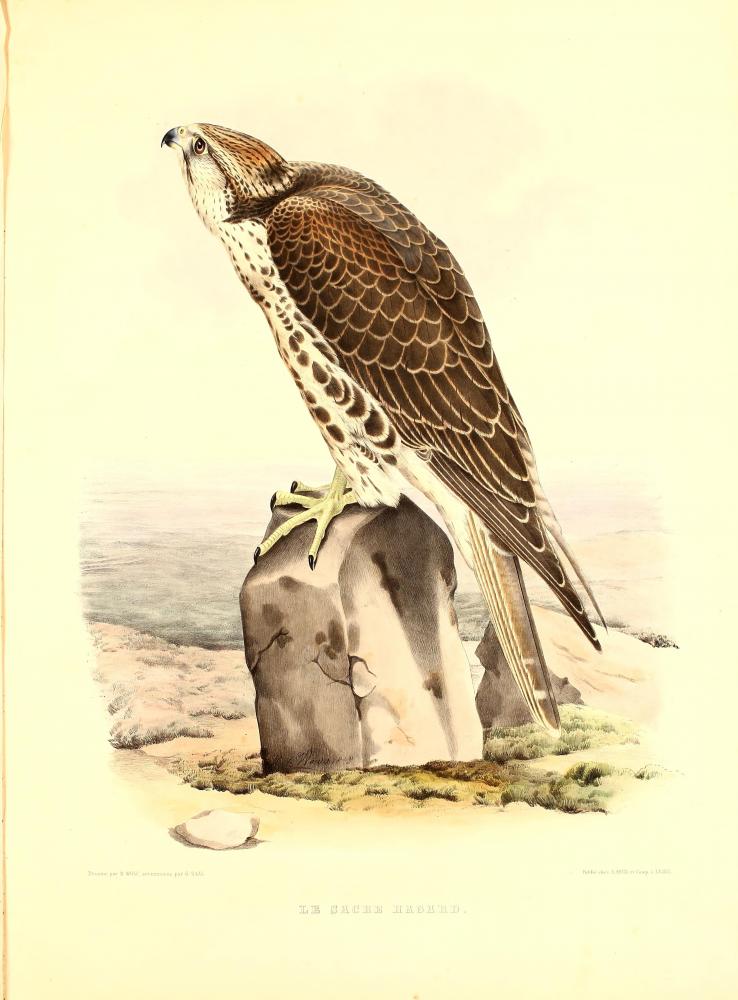
Sacre
Very similar to the grifaut (gyrfalcon) in its characteristics, but smaller in size and brownish-grey in colour, the (falcó) sacre (saker falcon) was also highly prized for its hunting abilities. It was however somewhat easier and less costly to obtain than the grifaut; merchants brought them in large numbers, from Candia (Crete) mainly, where they were captured during their migratory journey even if some individuals were occasionally captured in the Iberian Peninsula. However, despite their acknowledged hunting ability, both the saker and the gyrfalcon were considered falcons villans, due, among other reasons, to their more irascible nature, which made training them and handling them while hunting more complicated and demanding.

Pelegrí
Three very similar, closely related birds were among those most appreciated by hunters in the Crown of Aragon, for their hunting skills and their beauty, and because of their good nature. The (falcó) pelegrí was the migratory variety of the peregrine falcon, called neblí by Castilian hunters. They nested in central and northern Europe and were captured while wintering in southern Europe, although they were also purchased from merchants from Flanders, where they were captured in large numbers during migration. The sedentary variety of the peregrine falcon, nesting in the territories of the Crown of Aragon, was called the (falcó) munterí or gentil, and baharí in Castile. They were taken from agres (eyries or nests) – on their owner’s land – shortly before they were fully fledged. Lastly, the North African variety of the peregrine falcon was called the (falcó) munterí barbaresc (Barbary falcon) and also tagarot, a name that was perhaps borrowed from tagarote, the term used by Castilian hunters to refer to this bird.
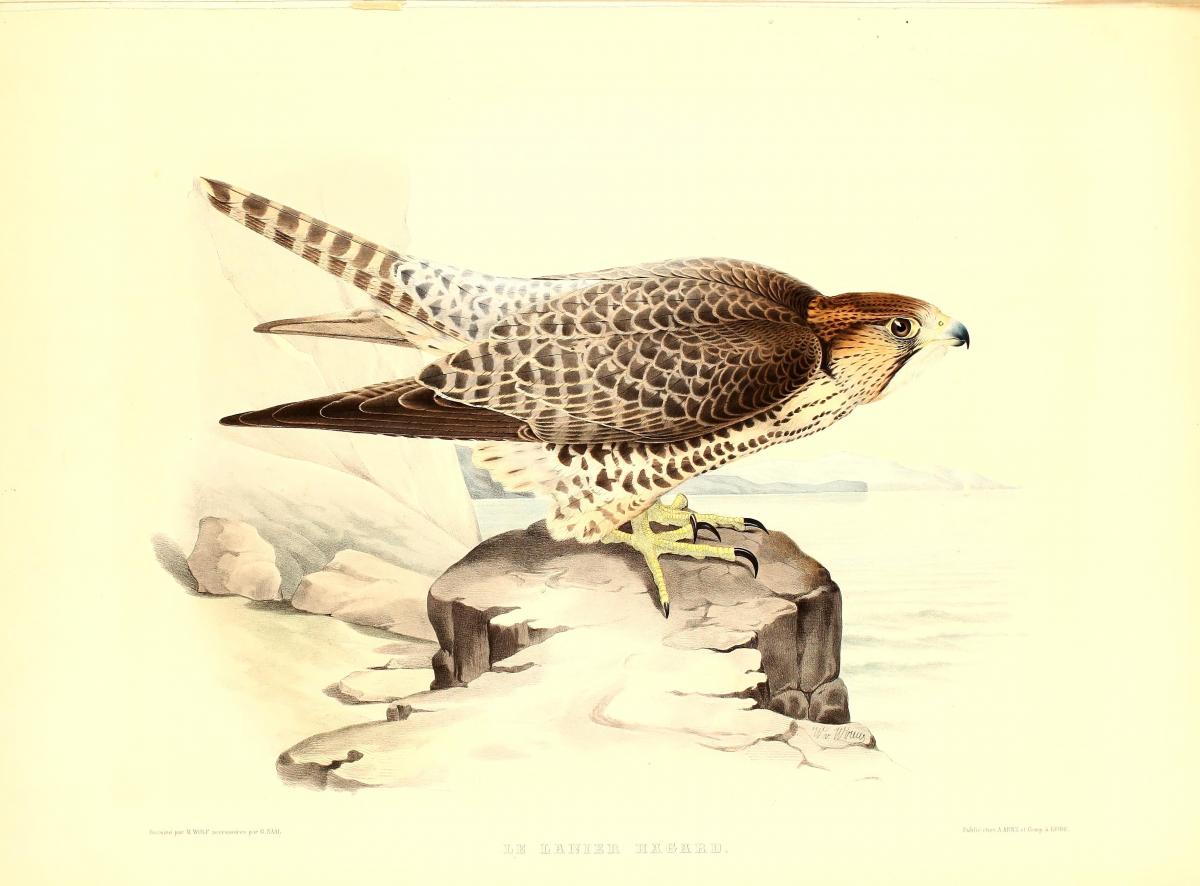
Llaner
Somewhat smaller than the above birds was the (falcó) llaner – lanner falcon – of which the European and North African varieties were distinguished. The former was called the provençal in Catalan and the borní in Castilian, while the latter was named the tunicenc and the alfaneque, respectively. They were birds less economically valuable and held in lower esteem, and they were generally used by hunters of lower social standing who, besides enjoying hunting, obtained meat for the table, as these birds were very suitable for hunting hare and partridge.
Another bird mentioned in the Catalan sources is the (falcó) bastard, which, one of the surviving treatises tells us, was a cross between a saker and a lanner. Castilian authors also recognized different crossbred falcons, called bastardo or entrecelí, depending on the supposed species from which they were bred. In modern language they would be hybrid individuals and we are unable to confirm whether they were indeed birds crossbred from two different species, or whether they were birds of one species that, within its range of morphological variation, was similar to another species due to sharing some traits. In reality this is a minor issue, since the important thing here is the perception and the interpretation that medieval society made of its world.
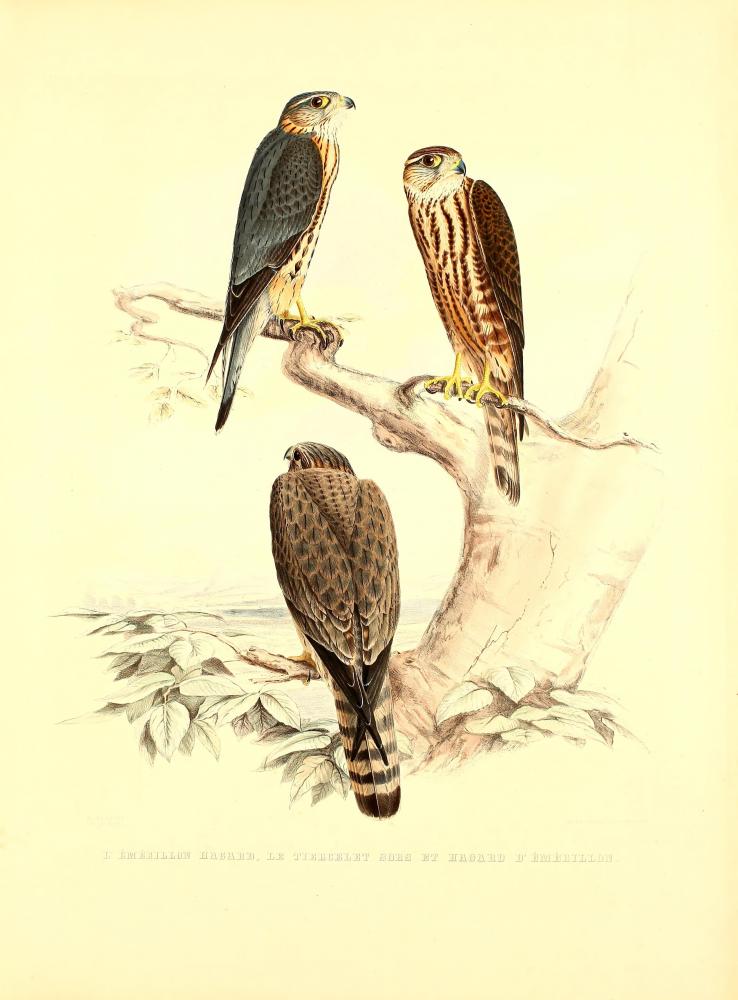
Esmirle
Of the small birds, one of the most highly appreciated and used for hunting was the merlin, called esmirle in Catalan and esmerejón in Castilian. It is a tiny falcon that nests in northern Europe and travels to the Mediterranean region to spend the winter, the moment when it was captured for use in hunting. Easy to train, the merlin was capable of capturing small and medium-sized birds, and its flight was most acrobatic and delightful.
Moixeta
Another small falcon, apparently trained to hunt only on rare occasions, was the common hobby, named the alcotán by Castilian hunters. We have been able to determine that this bird, which had previously gone unnoticed in the Catalan sources, was called the moixeta. The very few mentions in the Catalan sources – the consequence of its scant use in hunting – together with the fact that the term moixeta, and its variants, is now used to refer to very different animals, has hindered the identification of the term used for this bird in the Middle Ages. It appears mentioned, for example, in Lo Somni de Joan Joan, by the Valencian poet Jaume Gassull:
Vist que tambe al menester,
los seus falcons
no spantaran ja molts agrons
car són moxetes
que scassament les busqueretes
o bequerudes
volar poran, segons les mudes
que tenen ja
To express the old age – and the resulting limitation for hunting large herons – of falcons, he compares them to small hobbies (moxetes), which pose barely any threat to tiny busqueretes (small birds).
All the birds mentioned up to now were identified by medieval hunters as falcons, as they shared a series of very obvious morphological traits, one of which was very distinctive, having black eyes. Besides them, huntsmen in western Europe used two other birds of prey related to one another, but not considered falcons, and which also shared numerous common traits, like that of having yellow or orangey eyes.
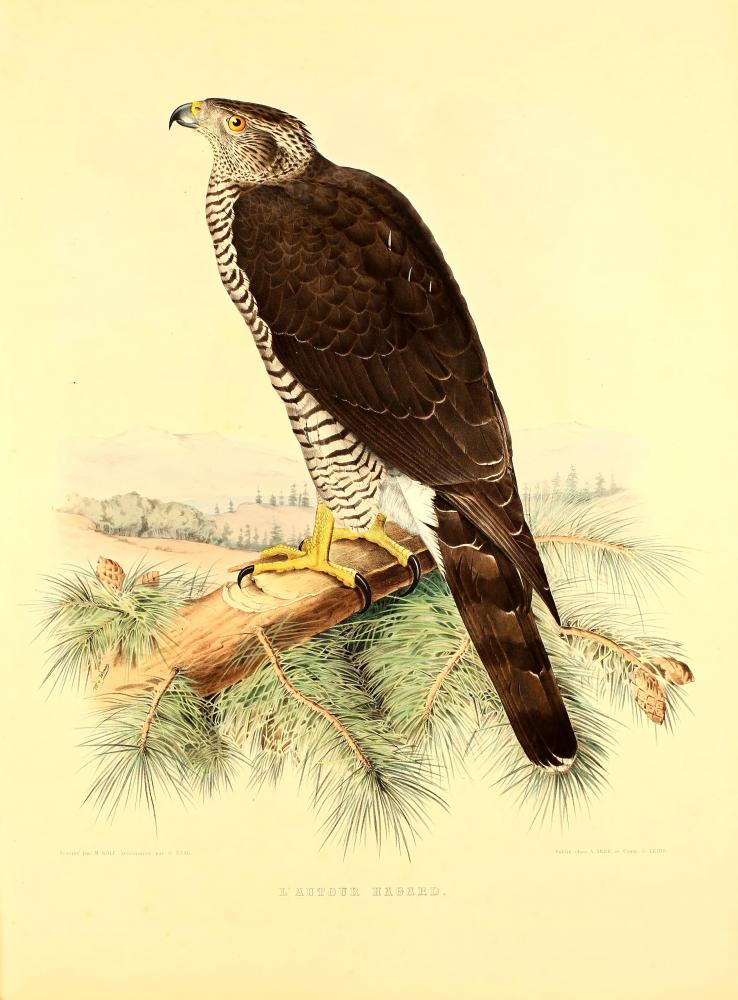
Astor
The larger of them, the goshawk, was called the astor in Catalan and the azor in Castilian. It is a bird present and nesting in Europe, and it lives in woodland, in which it develops perfectly and builds its nest. It is a bird highly suited to capturing very diverse prey, but whose hunting flight, normally brief, direct and close to the ground, lacks the striking nature of the prolonged aerial flight of falcons in pursuit of their quarry. And so, during the Middle Ages one observes a loss of favour with kings and princes, who adopted some of the falcons as their favourite birds. Goshawks in each region were ascribed a different value and quality, those from Norway being among the best.
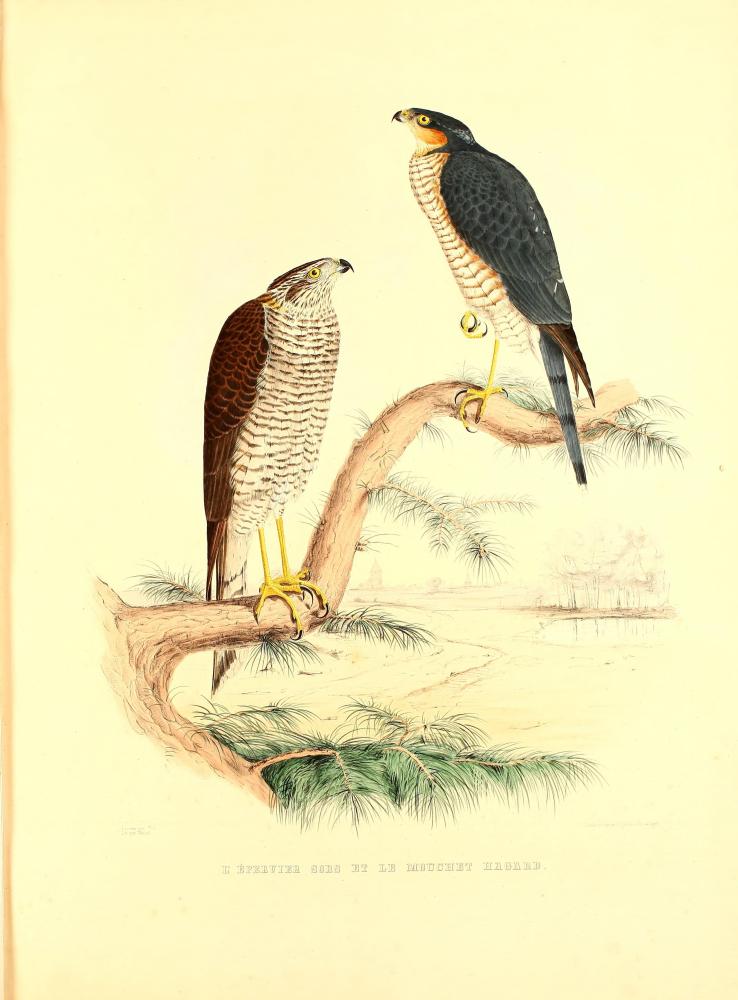
Esparver
Similar to the goshawk, but much smaller, was the esparver (sparrowhawk ), called the gavilán by Castilian hunters. It was a bird highly appreciated in the Middle Ages and several treatises composed in Catalan frequently refer to it, to both describe it and give instructions about training it and curing its diseases. Besides its qualities for hunting small and medium-sized birds, the sparrowhawk enjoyed a reputation as a noble bird, expressed and transmitted in various legends. It was, moreover, a suitable bird for ladies, who loved carrying a light but highly prestigious bird on their fist, and which even allowed them to comfortably hunt quails or other birds.
Females and males
In all these bird species, the females are significantly larger and stronger than the males, which generally made them more appreciated for hunting. Frequently, however, males and females of the same species could be used to capture different animals, adapting the size of each bird to that of its quarry. Huntsmen used the term prim to refer to a female bird, and terçol for the male. Thus, in the documents we find expressions like «un astor prim» or un «grifalt terçol». Usually, when the sources mention a particular bird without specifying prim or terçol, it is normally a female, which, as mentioned, were preferred and used the most. It should be mentioned that some medieval treatises justified the terms prim and terçol – and their equivalents, very similar in other European languages – by the fact that the first egg to hatch in a nest gave rise to a larger, female bird, while the third egg produced a small, male bird. According to this interpretation, the second egg to hatch gave rise to a medium-sized bird that was neither prim nor terçol. One of the most important Catalan treatises devotes a brief chapter to these «mijans astors». It is also useful to point out here that Catalan, like other European languages, reserved a proper name for the male sparrowhawk, not an 'esparver terçol', but a moscard (musket). Ignorance of this technical vocabulary, so specific, has occasionally prevented scholars of medieval literature from correctly interpreting some passages by important poets; this is the case with the poem by Cerverí de Girona referring to the «esperver» and the «moscart» and representing the lady and the knight in love.
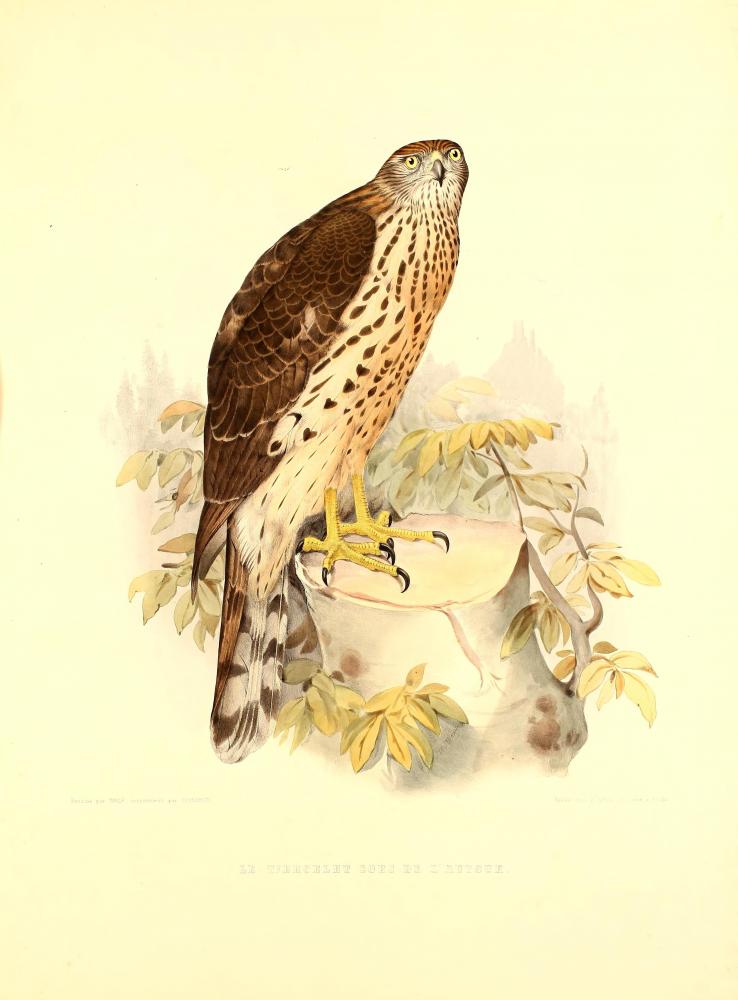
The age of the birds
The age of a bird of prey was calculated according to the number of moults, given that these birds renew their plumage completely once a year. However, the most usual reference to age in the sources is that which distinguishes between young birds under a year old and those that are already more than one year old and have completed their first moult. The former were called sor (eng. sore), while the latter were referred to as mudat (mewed). The justification for this classification of birds of prey is that before their first moult young birds have a different plumage, normally of brownish-grey or reddish hues, which explains the name sor, then the name for that colour, usually applied to horses. With the first renewal of the plumage, birds acquire a different colour, which then remains the same after every subsequent moult, so it is not possible to determine the exact age on the basis of the colour of the plumage, and for this reason the sources usually only distinguished between sor and mudat.
Stage of development
Another different classification distinguished birds according to their stage of development or age when they had been caught. It was a very important distinction, as, depending on the moment they were captured, birds possessed different qualities which characterized them all their lives, requiring specific handling and making them more or less suitable for capturing certain animals. Thus, birds taken from the nest when they were small, not fully developed, were described as nienc (eyass), while those taken when fully developed and which had begun to fly around near the nest, were called ramenc (brancher), a term that refers to the branches of the trees around which they fluttered. The young falcon, goshawk or sparrowhawk that was captured once it had left the nest and no longer depended on its parents for food was termed aranyenc (passage hawk), because it was frequently captured with a net called an arany. Lastly, when this bird was captured with adult plumage – meaning it was over one year old – it was called mudat d’aire (haggard).
Provenance
Huntsmen also differentiated birds by their provenance, attributing them with different qualities depending on where they came from. Some of these adjectives referring to provenance, as we have seen, became the generic name for the species in question, like provençal, tunicenc or barbaresc, not truly pointing out the exact provenance of each bird of that species. Other demonyms, however, did still point to the birds’ specific origin and, with it, indicate the characteristics typical of birds from that place. Thus, we can mention falcons sards, from the island of Sardinia, which were munterins with singular characteristics that made them highly appreciated. In the same way, the sources mention astors noruecs (Norwegian) and consider them to be among the most valuable for hunting.
Training process
The process of training the bird, from its capture in the wild until it was used successfully in hunting, also gave rise to specific terminology that made it possible to specify what stage of the process the animal was at. Thus, the recently captured falcon was described as brau or salvatge. After that, work had to be done to make it lose its fear of people and get used to perching calmly on the hunter’s fist, the stage when the falcon (or other bird) was described as maner, dompde, asegurat or privat amb hom (tame). It was also necessary to get it used to wearing the hood – called the capell – and to the process of putting it on and taking it off. When the falcon had reached the stage when it accepted this instrument covering its head without trying to avoid it and without taking it off itself, it was called capeller.
After flying, falcons were retrieved by the hunter with an instrument – normally made of leather and feathers – that looked just like a bird and was called the lloure (lure). Thus, when the falcon had already learned to answer the call using this instrument and to perch on it, it was called llourer. The falcon – or goshawk or sparrowhawk – that had completed its training and had learned to hunt and capture quarry was called afaitat (entered), a term that could be completed with the specification of the quarry for which it had been trained: afaitat a perdiu, afaitat a agró, etc. When a falcon or other bird hunted particularly well or efficiently it was described as bo (good) or, even, maestre (master).
Before going out to hunt, the bird had to be well fed, to be able to fly strongly, but it had to be hungry enough to make it pursue its quarry decisively; to indicate that the falcon – or other bird of prey – was in that state, it was said that it was temprat, and achieving this required great skill on the part of the huntsman or falconer. All these terms that described the bird’s level of training and its readiness for hunting were habitually modulated for greater precision: ben temprat, benafaitat, mal llourer, etc.
Although not always, falcons were often trained to capture a specific quarry, which led the birds to be described by their specialization. Thus, in the sources we frequently find terms like agroner, gruer, picacer or ostarder, to refer to the falcons trained especially to capture herons (agrons), cranes (grues), magpies (picarasses) and great bustards (ostardes), respectively. Falcons specialized in capturing hares or partridges were often called bo de llebre and bo de perdiu.
Particular characteristics
Lastly, birds of prey were also called names that specified some particular characteristic, either physical or behavioural. Of the first, the sources offer references to falcons grans or comunals, to specify their size, or to a falcó blanc (or blanquet) to indicate that a certain bird had a paler than normal plumage. Some of the terms we find to describe the behaviour of certain birds are cridador and garfer. These two characteristics – the tendency to chirp or screech frequently and that of attacking the handler with its talons – normally occurred in birds taken from the nest (niencs) and hand-reared, and it was something medieval huntsmen were perfectly familiar with, as are modern falconers; they all interpreted this behaviour according to its scientific paradigm and developed strategies to avoid these negative behaviours. Other undesirable habits in the bird of prey were not answering the hunter’s call, not allowing him to get close, or flying away from him, making recovering it a tedious, complicated task. This behaviour, due normally to deficient training, led the falcon, goshawk or sparrowhawk in question to be described as esquiu or rodador. The term rodador referred to the fact that the animal flew in circles around the huntsman, but did not perch on his fist when he called or allow itself to be picked up. On the contrary, the falcon that decisively attacked and captured strong or dangerous quarries, which were normally larger than it, was often described as ardit.
As can be seen, medieval hunters developed a rich vocabulary to describe the many characteristics that could be recognized in birds of prey, depending on multiple criteria. In this document a fairly complete overview has been offered, although without aiming to be exhaustive, of the different classifications of birds and the associated terms, based on medieval Catalan sources.
